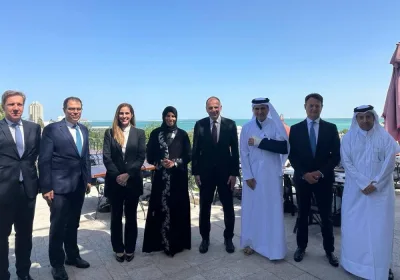The impending launch of the long-awaited Barzan natural gas development together with capital spending related to the hosting of the 2022 FIFA World Cup will be “positive factors” for Qatar’s growth, the Economist Intelligence Unit (EIU) has said in a report.
The ramping-up of major infrastructure and investment projects should play a part in "buttressing" growth elsewhere in the region, it said.
In Kuwait, the government's significant fiscal buffers (including sovereign wealth fund assets totalling over $500bn), together with ample scope to step up domestic and foreign borrowing if needed, put it in a strong position to maintain the pace of capital spending.
Following estimated growth in the Gulf Co-operation Council of 2% in 2017, the EIU expects the pace of economic expansion in the bloc to increase to an annual average of 2.7% in 2019 -2020.
According to the EIU, the economic outlook for the Middle East and North Africa (Mena) region is "mixed".
Although the recovery in oil prices over the past two years has provided some welcome relief, the region's major oil producers have been engaged in the biggest reduction of the state's role in the economy since the late 1990s. This has included cuts to capital spending and politically sensitive subsidies, as well as growing interest in private financing in infrastructure, it said.
A "renewed forecast weakening" in average oil prices over the next two years will "constrain the ability" of governments to ease their austerity drives substantially.
In early December, in order to counter the recent slide in global oil prices, Opec and Russia agreed to cut oil production by 1.2mn bpd from October 2018 levels.
Despite this agreement, the EIU expects global oil prices to trend lower in 2019-20, reflecting a number of factors – including rising US oil production and a moderation in Chinese demand.
At a forecast average of $68.8 for a barrel in 2019 20, the price of dated Brent Blend will still be higher than its average level in 2016 ($44).
Nonetheless, the EIU noted this will still leave oil prices more than a third lower than their average level between 2011 and 2013. As a result, it expects that economic policy within the Mena region will continue to be dominated by governments' efforts to lessen their reliance on oil and diversify their economies.
Meanwhile, oil-importing countries in the region will need to take into account the likelihood of reduced flows from the oil exporters when preparing their financing programmes.
“The economic performance of the Mena region, which has around 65% of the world's oil reserves (and produces around 25% of its oil output), unsurprisingly suffered in the wake of the 2014 – 2016 slump in oil prices,” the EIU said.
Deepening fiscal austerity, combined with tightening liquidity and depressed investment, restricted economic growth to an annual average of 3.6% in 2015-16 well below the 4.5% average growth rate recorded in the 2004-13 period.
Economic growth slowed further in 2017, to 1.6%, before decelerating to an estimated 1.3% in 2018. However, the recovery in global oil prices that occurred in 2017 – 2018 has provided a more solid platform for a loosening of austerity in the oil-exporting countries, including a recovery in investment.
Despite a forecast renewed dip in oil prices over the next two years, the improved financial position of the Mena countries will therefore lead to a modest recovery in growth—with the pace of real GDP expansion picking up to an average of 2.4% a year in 2019 - 2020, the EIU said.




